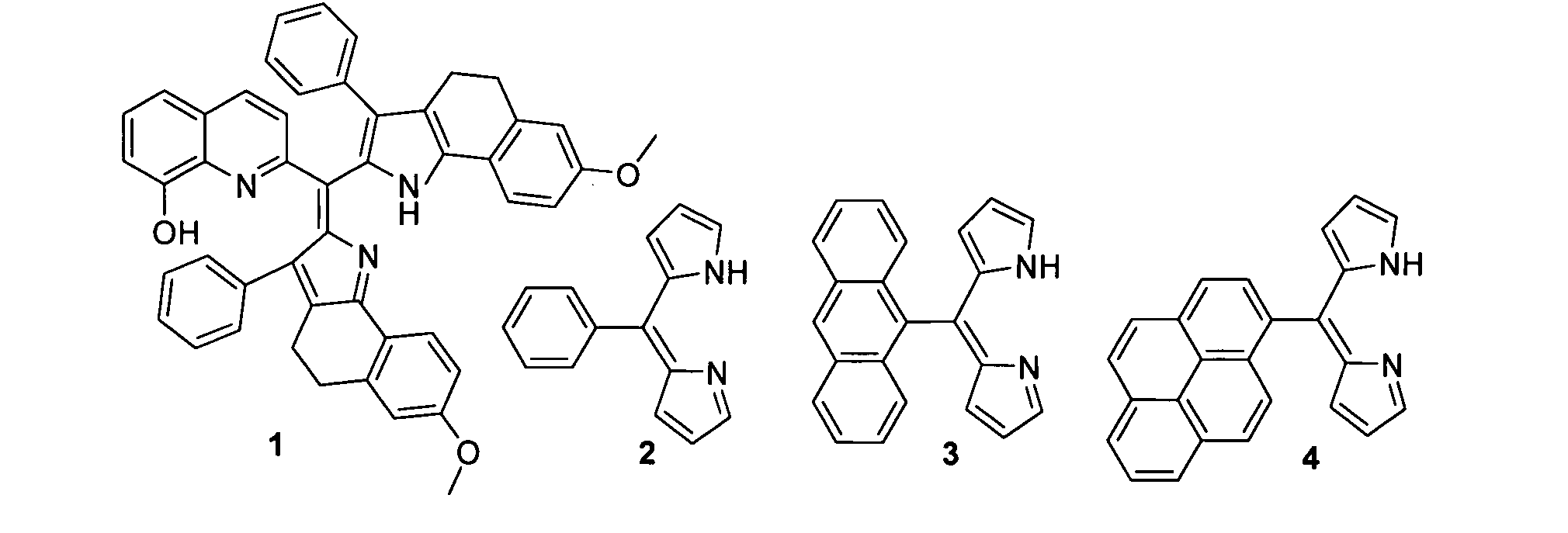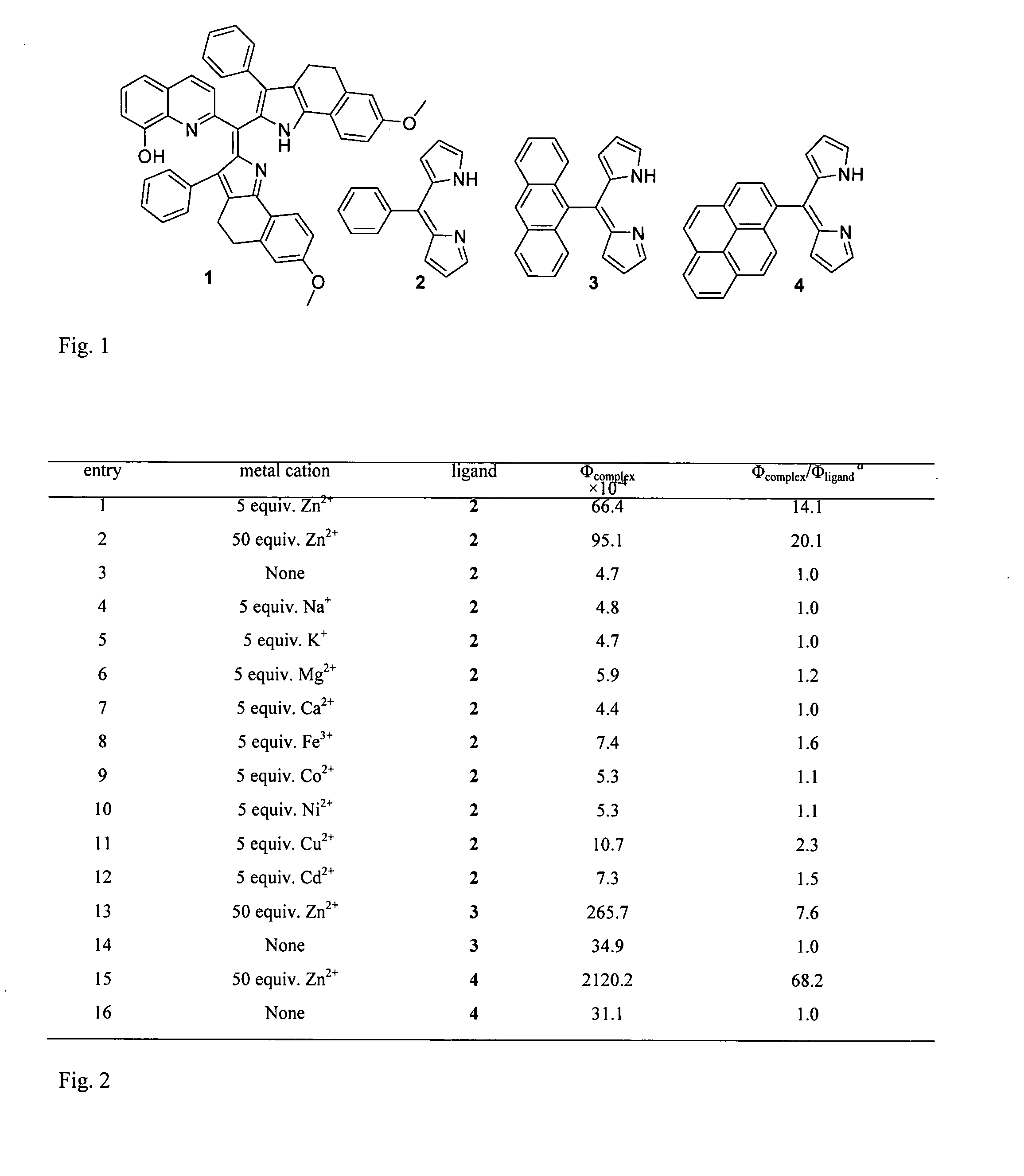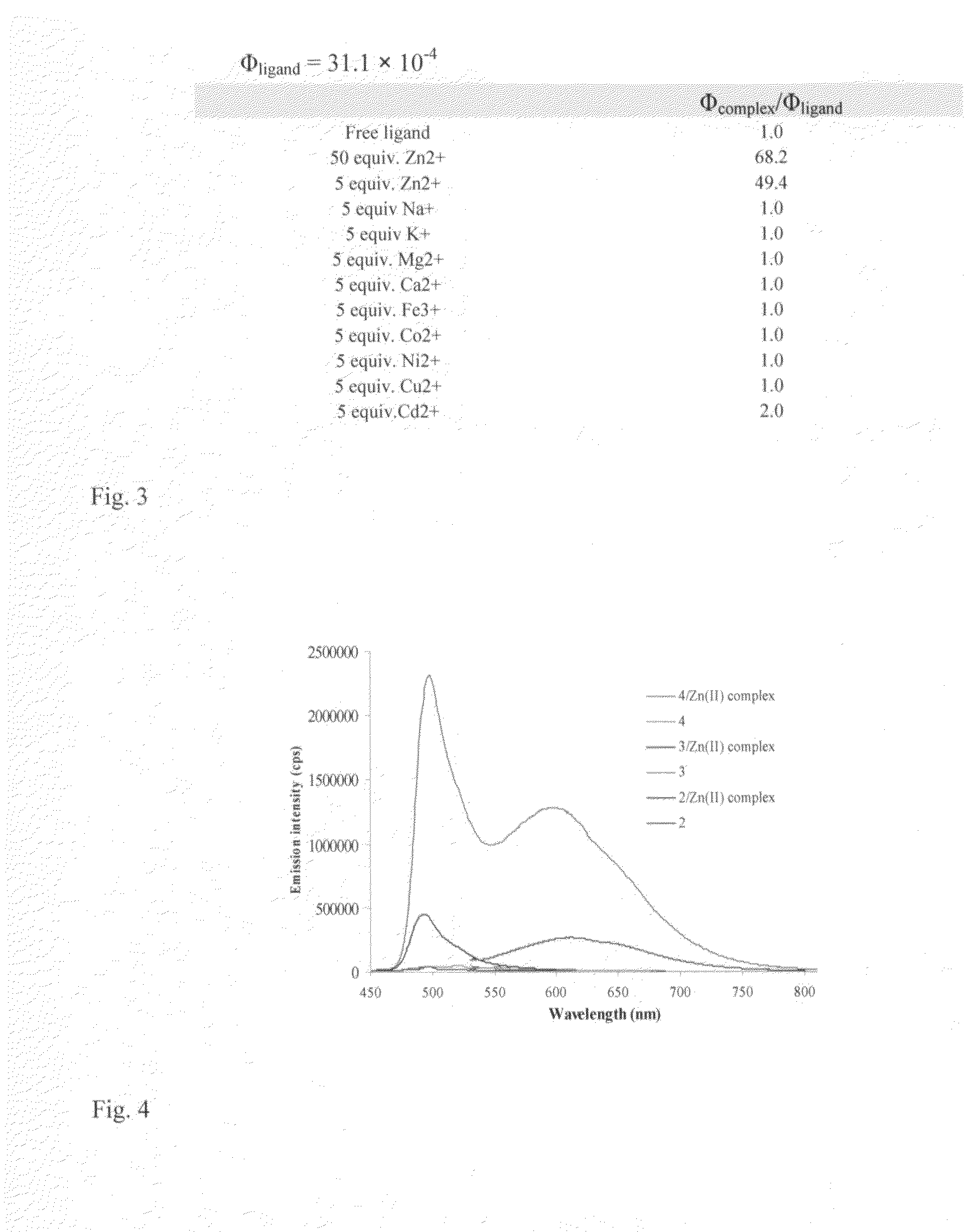Fluorescent chemosensors for metals based on dipyrrins
a dipyrrin and fluorescence technology, applied in the field of sensors, can solve problems such as unoptimized compound (1), and achieve the effects of small atomic radius, reduced steric hinderance, and sharp absorption band
- Summary
- Abstract
- Description
- Claims
- Application Information
AI Technical Summary
Benefits of technology
Problems solved by technology
Method used
Image
Examples
Embodiment Construction
[0054]The most basic embodiment of the invention is a chemosensor for metal ions that comprises a metal binding, electron donating dipyrrin functionality linked to an electron withdrawing functionality. One of the preferred embodiments is a chemosensor for Zn2+, while alternative embodiments are chemosensors for Cu2+ and other metal ions.
[0055]The chemosensor of this invention can be attached or absorbed onto an appropriate material, such as glass, plastic, quantum dots or polymers. Appropriate derivatization is necessary for attachment. Luminescent quantum dots have been used as alternative to organic fluorophores in bioimaging applications due to their high emission quantum yield, photostability, size dependent wavelength tunability in the visible range of the electromagnetic spectrum and narrow emission peaks, which enable simultaneous observation of multiple targets by using quantum dots of different emission wavelengths. Recently, the scope of use of luminescent quantum dots wa...
PUM
| Property | Measurement | Unit |
|---|---|---|
| Equivalent mass | aaaaa | aaaaa |
| Equivalent mass | aaaaa | aaaaa |
| Sensitivity | aaaaa | aaaaa |
Abstract
Description
Claims
Application Information
 Login to View More
Login to View More - R&D
- Intellectual Property
- Life Sciences
- Materials
- Tech Scout
- Unparalleled Data Quality
- Higher Quality Content
- 60% Fewer Hallucinations
Browse by: Latest US Patents, China's latest patents, Technical Efficacy Thesaurus, Application Domain, Technology Topic, Popular Technical Reports.
© 2025 PatSnap. All rights reserved.Legal|Privacy policy|Modern Slavery Act Transparency Statement|Sitemap|About US| Contact US: help@patsnap.com



